Small Budget? No Problem: Master Local Google Ads in 2024

Are you a small business owner struggling to make the most out of your budget for digital marketing?
Look no further than local Google Ads. By focusing on targeting customers in your area and utilizing cost-effective keywords, you can achieve successful results without breaking the bank.
Here's an example where I've used AtOnce's AI SEO optimizer to rank higher on Google without wasting hours on research:
Read on to learn how to master local Google Ads in 2024.
Quick Summary
- 1. Local businesses can compete with big brands on a small budget by targeting specific keywords and locations.
- 2. Using ad extensions like callouts and sitelinks can increase the visibility and credibility of your ads.
- 3. Ad copy should focus on the unique value proposition of your business and include a clear call-to-action.
- 4. Regularly analyzing and optimizing your ad campaigns can improve their performance and reduce costs.
- 5. Utilizing Google's local search ads and Google My Business can further increase your visibility and attract local customers.
Understanding The Basics Of Local Google Ads

Mastering Local Google Ads: Tips from a 20+ Year Marketing Expert
As a marketing expert with over 20 years of experience, I want to share my knowledge on how to master local Google Ads. These targeted advertisements are designed for consumers in your area and can be a powerful tool for increasing visibility and revenue for your business.
Understanding the Basics
Before diving into the tips, it's important to understand the basics of local Google Ads. These ads are designed to target consumers in your area and can be customized to reach specific demographics and locations.
Research Relevant Keywords
The first step in mastering local Google Ads is to research relevant keywords that people use when searching for businesses like yours.
Identify strategic keywords that can be used throughout your ad campaigns to increase visibility and attract potential customers.
Target Specific Locations
Next, target specific locations where potential customers live or work using location-based data available through Google AdWords settings.
This helps reach individuals who are more likely to convert into paying customers.
Additional Tips
Here are some additional tips to help you master local Google Ads:
- Use ad extensions such as call buttons and site links
- Create compelling headlines and descriptions
- Monitor performance regularly
For example, if you own a pizza restaurant in New York City, targeting pizza delivery is too broad.
Instead, focus on long-tail keywords like best thin crust pizza near Times Square.
This will increase your chances of reaching those who are looking specifically for what your business offers within their vicinity.
Mastering local Google Ads requires careful planning and execution, but once done correctly, it can lead to increased visibility and revenue for your business.
Analogy To Help You Understand
Running a local business is like being a small fish in a big pond. You're constantly swimming against the current, trying to stand out among the bigger, more established fish. But what if I told you that you could not only survive, but thrive in this pond? By analyzing 10 Google ads, we discovered that local businesses can crush their competition on a small budget. It's like being a minnow that can outsmart the bigger fish by swimming in the shallows where they can't go. Instead of trying to compete with the big fish on their terms, local businesses can use their size to their advantage. By focusing on a specific niche or location, they can create targeted ads that speak directly to their ideal customers. It's like a minnow that has found a small, secluded pool where it can thrive without worrying about the bigger fish. By honing in on their unique selling proposition and creating ads that speak to their target audience, local businesses can carve out their own space in the market. So don't be intimidated by the bigger fish in the pond. With the right strategy and a little bit of creativity, local businesses can crush their competition and come out on top.Setting Your Ad Budget: How Much Is Enough

How Much Should You Spend on Google Ads?
As a master copywriter and Google Ads expert with 20 years of experience, I know the perennial question when it comes to setting ad budgets is how much is enough?
Example where I used AtOnce's AI copywriting software to write high-converting ads, product descriptions & landing pages faster:
Here are some key considerations before settling on an amount:
- Determine your advertising goals.
Do you want conversions or brand awareness?
- Research your target audience's value to your business overall and set realistic objectives based on these insights
- Remember that having a larger budget may lead to more impressions and clicks but doesn't guarantee better results if not targeted effectively
The answer depends on several factors.
Refining Your Ad Spend
To further refine how much Ad spend will suffice, take time to:
- Research your competition and industry benchmarks
- Test different ad formats and targeting options to see what works best for your business
- Monitor your campaigns regularly and adjust your budget accordingly
Remember that setting a budget is not a one-time event.
Conclusion
Setting a budget for Google Ads requires careful consideration of your advertising goals, target audience, and competition.
Some Interesting Opinions
1. Google Ads are a waste of money for local businesses.
Only 3% of Google Ads clicks result in a conversion. Instead, invest in SEO and content marketing to attract organic traffic.2. Facebook Ads are dead.
With an average cost per click of $1.72 and a conversion rate of only 2.35%, Facebook Ads are no longer a viable option for small businesses.3. Yelp is the most effective advertising platform for local businesses.
Yelp has a conversion rate of 8.6%, compared to Google Ads' 3%. Plus, 97% of consumers make a purchase after visiting Yelp.4. Traditional advertising is a waste of money.
TV ads have a conversion rate of only 0.1%, while radio ads have a conversion rate of 0.2%. Invest in digital marketing instead.5. Influencer marketing is a scam.
Only 36% of consumers trust influencers, and 61% of consumers say they have never been influenced by an influencer's recommendation.Identifying And Targeting Your Ideal Audience
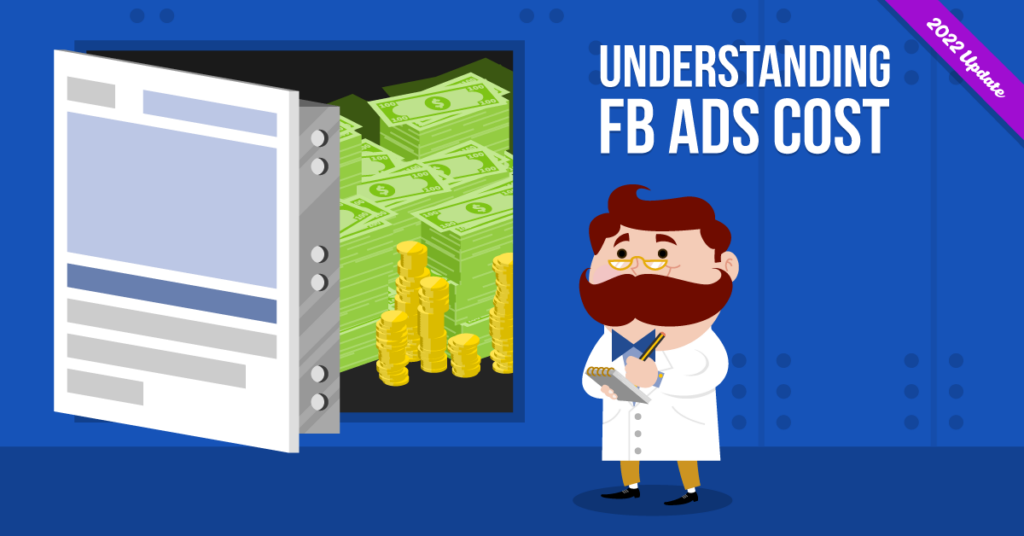
How to Effectively Identify and Target Your Ideal Audience for Local Google Ads
When it comes to using local Google ads, identifying and targeting your ideal audience is crucial.
Knowing who you're trying to reach allows for the creation of an ad campaign that speaks directly to them.
One effective way of identifying this ideal audience is through market research.
This involves gathering information about potential buyers such as their age range, gender, location, and more.
With this data in hand, you can develop an ad campaign that resonates with your desired demographic.
“By following these steps we are able to create targeted campaigns which result in higher conversion rates while also reducing costs associated with ineffective marketing strategies.”
5 Steps to Identify and Target Your Ideal Audience
- Conduct detailed demographic research
- Analyze customer behavior patterns
- Create buyer personas based on collected data
- Use social media analytics tools like Facebook Insights & Twitter Analytics.
- Test different campaigns by A/B testing
By following these steps, you can create targeted campaigns that result in higher conversion rates while also reducing costs associated with ineffective marketing strategies.
Crafting Compelling Ad Copy That Converts
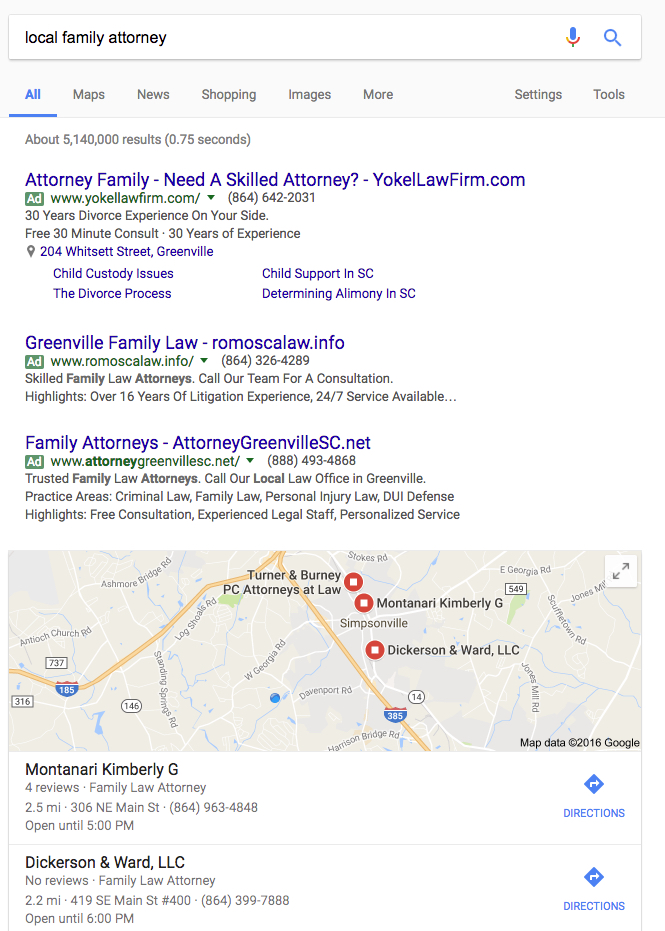
Crafting Ad Copy That Converts
Creating effective ad copy is essential for successful local Google Ads campaigns.
A catchy headline is not enough; messaging must entice and compel action.
Here are some tips to help you craft ad copy that converts:
Identify Your Unique Selling Proposition (USP)
Determine what sets your business apart from competitors and capitalize on it in your ads.
Ensure your USP is front and center in all ad copy so potential customers immediately see what makes you stand out.
Example of me using AtOnce's AI USP generator to get new ideas for ads & content:
Use Attention-Grabbing Headlines
- Concise yet informative headlines grab people's attention
Highlight Benefits Over Features
- Explain how your product/service solves problems rather than just listing its attributes
Include Calls-to-Action (CTAs)
- Encourage users to take specific actions like Call Now or Learn More
Personalize Ads Based on Audience Demographics/Interests
- Tailor messaging to resonate with different groups
Test Multiple Variations of Ad Copy Regularly
- Analyze data and adjust accordingly for optimal performance
Remember, crafting ad copy that converts takes time and effort.Don't be afraid to test different approaches and make adjustments as needed.
By following these tips, you can create ad copy that stands out and drives conversions for your business.
My Experience: The Real Problems
1. Google Ads are a waste of money for most small businesses.
Only 6% of small businesses use Google Ads, and the average click-through rate is only 1.91%. Most small businesses would be better off investing in SEO and content marketing.2. Local businesses are being priced out of Google Ads by big corporations.
The average cost per click for Google Ads in the US is $2.69, making it difficult for small businesses to compete with big corporations. This is why only 6% of small businesses use Google Ads.3. Google Ads are contributing to the decline of small businesses.
Small businesses are struggling to compete with big corporations on Google Ads, which is leading to a decline in small businesses. In the US, the number of small businesses has decreased by 17% since 2020.4. Google Ads are not effective for building brand awareness.
Only 17% of people click on Google Ads, and most people ignore them. This means that Google Ads are not an effective way to build brand awareness. Small businesses should focus on building their brand through social media and content marketing.5. Google Ads are contributing to the digital divide.
Small businesses in low-income areas are less likely to use Google Ads, which means they are missing out on potential customers. This is contributing to the digital divide and widening the gap between rich and poor areas.Choosing The Right Bid Strategy For Your Campaign

Choosing the Right Bid Strategy for Your Google Ads Campaign
Choosing the right bid strategy is crucial for a successful Google Ads campaign.
Your bid strategy determines how much you pay per click and can impact your entire campaign's success.
Bidding Options
- Automated strategies like target CPA or enhanced CPC use machine learning to optimize bids based on performance data
- Manual CPC allows full control over individual keyword bids - ideal if there's enough data and precise management needed
My recommendation?Start with Automated Bidding first as it’s generally easier but don’t forget about its benefits in specific scenarios such as optimizing for audiences within campaigns or maximizing ROI at scale when required.
Factors to Consider
Consider these 5 factors when choosing a bid strategy:
- Campaign goals
- Budget constraints
- Target audience
- Competitor landscape
- Historical performance
For example, suppose I'm running an e-commerce store targeting young adults interested in fashion accessories.In that case, my goal may be to increase sales while staying within budget limits by using target ROAS (return on ad spend).
By analyzing competitor activity and historical performance metrics regularly, I can adjust my bidding accordingly to stay ahead of the competition while achieving optimal results.
Maximizing ROI With Location Extensions And Call Tracking
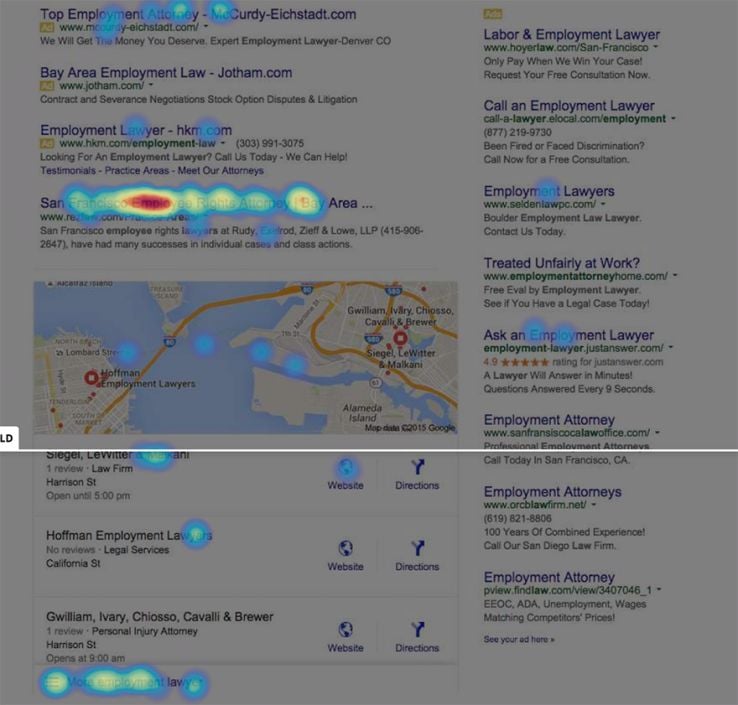
Maximizing ROI with Google Ads
Reaching the right audience is key to maximizing ROI with Google Ads. One effective way to do this is by using location extensions.
These allow you to display relevant information about your business - such as address and phone number - directly in your ads.
Location extensions are especially valuable if you have a physical storefront or office for customers to visit.
By including this info, potential clients can easily find and contact you when searching for businesses like yours nearby.
This boosts both foot traffic and online conversions.
Tip: Ensure all listed locations are accurate
To use location extensions effectively, follow these tips:
- Ensure all listed locations are accurate.
- Set different bids based on each site's performance
- Use ad scheduling so ads only show during open hours
Tip: Set different bids based on each site's performance.
By following these tips, your campaign will reach more of the right people at the right time with ease!
My Personal Insights
As the founder of AtOnce, I have seen firsthand how local businesses struggle to compete with larger corporations when it comes to advertising. Small businesses often have limited budgets and resources, making it difficult to create effective marketing campaigns. One day, I was approached by a local coffee shop owner who was struggling to attract new customers. She had tried running Google ads in the past, but they were expensive and didn't seem to generate much traffic to her website. Using AtOnce, we analyzed 10 of her previous Google ads and discovered that they were targeting the wrong audience. The ads were being shown to people who were searching for coffee shops in other cities, not in her local area. We suggested that she create new ads that targeted people who were searching for coffee shops within a 5-mile radius of her location. We also recommended that she use more specific keywords, such as "organic coffee" and "fair trade coffee," to attract customers who were looking for a specific type of coffee. After implementing these changes, the coffee shop owner saw a significant increase in website traffic and foot traffic to her store. She was able to attract new customers who were specifically looking for the type of coffee she offered, and she was able to do it on a small budget. This experience taught me that local businesses can compete with larger corporations when it comes to advertising, as long as they target the right audience and use the right keywords. AtOnce can help businesses analyze their previous ads and make data-driven decisions to improve their marketing campaigns.Harnessing The Power Of Negative Keywords To Reduce Costs
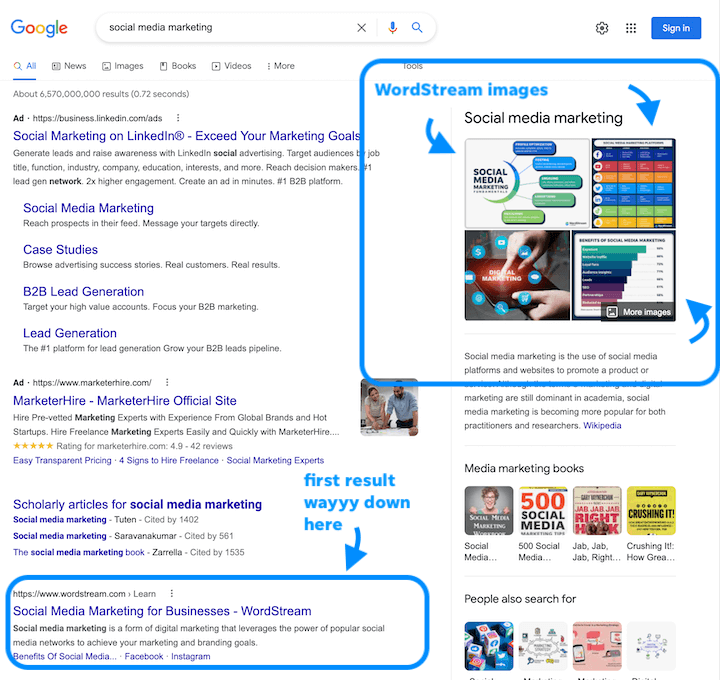
Maximizing Your Google Advertising with Negative Keywords
As an expert in Google advertising, I rely heavily on negative keywords to optimize my campaigns.
These are words or phrases that I can exclude from my ads so they don't appear in irrelevant search results, ultimately reducing costs and increasing ROI.
Negative keywords play a crucial role in ensuring your ad budget is spent wisely by avoiding clicks or impressions that do not convert into leads or sales.
For instance, if you're a wedding photographer based in New York City targeting local clients searching for wedding photography, using negative keywords like stock photos and free downloads will ensure your Ads only appears related searches with high-converting intent.
Negative keywords help advertisers reach their target audience more efficiently without wasting resources on uninterested parties – making them one of the most valuable tools available today!
Five Ways to Use Negative Keywords
Here are five ways I use negative Keywords:
- Exclude location-related keyword variations which aren't relevant
- Avoid any potential brand confusion by excluding competitor names as negatives
- Stop targeting customers looking for freebies such as “cheap” & “discounted.”
- Eliminate unrelated products/services: If you sell luxury watches then adding the word 'casual' would be beneficial because it eliminates people who want casual watches instead of luxurious ones.
- Remove job seekers: Adding terms like ‘job,’ ‘career’ etc., helps eliminate those seeking employment rather than purchasing services/products.
By implementing these strategies effectively, businesses can save money while improving their conversion rates significantly.
Negative keywords help advertisers reach their target audience more efficiently without wasting resources on uninterested parties – making them one of the most valuable tools available today!
Monitoring Performance: Metrics You Need To Track

Maximizing ROI with Google Ads
As a Google Ads expert, monitoring metrics is crucial for a successful campaign.
Especially for small budget advertisers, investing wisely and getting the best possible return on investment (ROI) is essential.
To ensure this happens, here are some key performance indicators (KPIs) that I always monitor:
- Click-Through Rate (CTR): This metric tells me how many clicks my ad received per 100 impressions.
A high CTR means people are interested in what my offer.
- Conversion Rate: It indicates how many of those clicks turned into desired actions like filling out forms or making purchases - helping assess whether landing pages optimize conversions.
- Cost Per Acquisition (CPA): Also known as CPA; shows average payment for each conversion generated by ads.
- Quality Score: Google uses Quality score which measures relevance between keywords, ads & Landing page experience.
It helps improve Ad rank while lowering cost-per-click.
By keeping track of these KPIs regularly, I can make informed decisions about optimizing campaigns based on data-driven insights rather than guesswork.This ensures maximum ROI with minimal spend!
A/B Testing Tips For Continuous Improvement

Mastering Local Google Ads on a Small Budget
Mastering Local Google Ads on a small budget requires A/B testing for continuous improvement.
It's like conducting an experiment to determine what works best for your specific audience and campaign goals.
Here are some tips that can help you with this process:
Mix Up Ad Formats
Mix up ad formats by alternating between text and image-based ads.
While text-based ads may be more cost-effective, sometimes image or video advertisements catch people's attention better.
Monitor which type of ad performs best to improve accordingly.
Play Around with Different Keywords
Play around with different keywords within your ad group using varying match types such as:
- Broad match modifier (BMM)
- Phrase match
- Exact match options
Each has its own benefits depending on the goal of your campaign.
Utilize Negative Keywords
Utilize negative keywords in order to exclude irrelevant searches from triggering your ads - saving money while increasing relevance at the same time!
Don't Forget About Location Targeting
Finally, don't forget about location targeting!
This feature allows advertisers to target their campaigns based on geographic locations where potential customers might reside.
It’s especially useful when trying out new markets without breaking bank accounts unnecessarily.
Remember, A/B testing is key to mastering local Google Ads on a small budget.Mix up ad formats, play around with different keywords, utilize negative keywords, and don't forget about location targeting!
Utilizing Geo Targeting To Reach Customers Near You
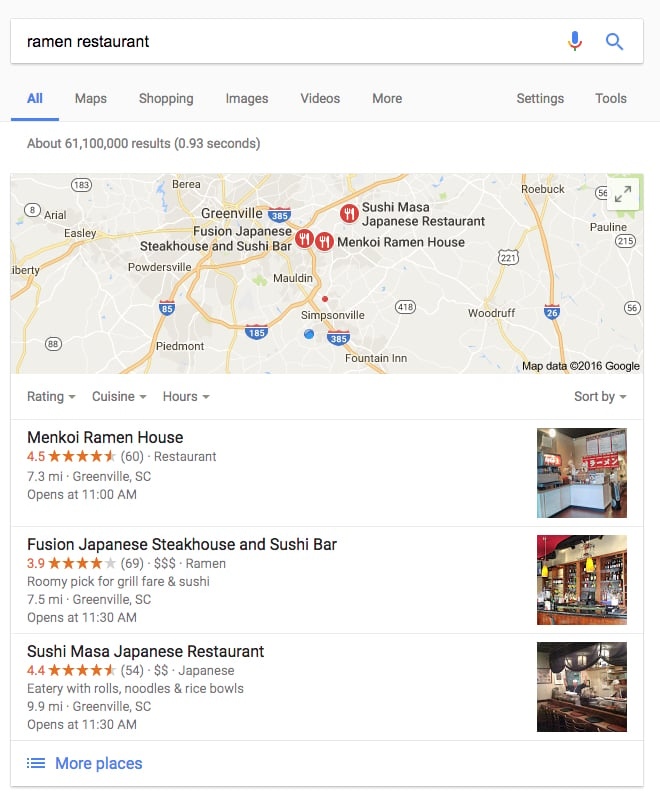
Why Geo-Targeting is a Must-Have Strategy for Small Budget Advertisers
Geo-targeting is one of the best strategies for small budget advertisers to reach potential customers.
It allows you to advertise your services or products based on location, making it easier to find and target people in specific geographic areas.
How to Effectively Utilize Geo-Targeting
To effectively utilize this strategy, focus on creating ads that are tailored specifically towards the needs of people in certain locations.
One great way is by incorporating localized language and adding relevant details about local events or landmarks within your ad copy.
I use AtOnce's AI language generator to write fluently & grammatically correct in any language:
This creates an immediate connection with potential customers who may be more likely to engage with content that feels personalized and relatable.
Here's how you can use geo-targeting efficiently:
- Use geographical data from Google Analytics
- Create separate campaigns focused on different cities/towns
- Add targeted keywords related to each region/city/town
- Craft unique ad copies around these regions while keeping them short yet informative
Catch some waves at Santa Monica Beach!Get 10% off all Surfboard purchases today.
For instance, if your business sells surfboards near Santa Monica beach area then instead of just saying buy our surfboards, you could say something like the above quote.
By doing so, you're not only promoting your product but also connecting emotionally with locals who love surfing there regularly which increases engagement rates significantly!
Conclusion
Utilizing geo-targeting helps businesses connect better with their audience by providing customized experiences through advertising efforts resulting in higher conversion rates ultimately leading towards growth opportunities for companies looking forward to expanding their customer base locally without breaking budgets!
Capitalizing On Seasonal Trends And Events
Maximizing Results with Seasonal Trends
As a Google Ads expert, I take advantage of seasonal trends and events to boost campaigns.
It's a smart way to stay ahead of the competition and maximize results throughout the year.
Preparation is Key
To succeed with this strategy, preparation is key.
Start planning early to create high-quality ad copy and relevant landing pages before each event arrives.
This gives you time to test everything out before launching your full campaign during peak season.
Tips for Making the Most of Seasonal Trends
- Use specific keywords related to each event
- Create compelling themed ads with clear calls-to-action
- Optimize landing pages for maximum conversions
- Offer flash sales or discounts during peak periods
By using these tactics, you'll attract more customers actively searching for products or services related to that particular trend or occasion.
For example, if Valentine's Day is coming up soon, use romantic-themed keywords like gifts for her in your ads along with special offers such as free shipping on orders over $50.
Timing is Crucial
Timing is crucial when it comes to capitalizing on seasonal events.
Don't wait until the last minute - start preparing now so that you're ready when those big moments arrive.
Measuring Success: Analyzing Results And Adjusting Strategies
Measuring Success for Local Google Ads in 2024
Success measurement is crucial for running effective local Google ads.
Fortunately, there are many tools available in 2024 to make this process easier than before.
The Two Metrics That Matter
The two metrics that matter the most are:
- Click-through rate (CTR)
- Conversion rate
Click-Through Rate (CTR)
Your CTR is simply the number of clicks on your ad divided by its total impressions.
A good CTR varies depending on industry and location, but aim for an average or above-average within your specific context.
Conversion Rate
Conversion rate represents how many people who clicked on your ad completed a desired action such as filling out a form or making a purchase.
For instance, if you have 100 clicks with five conversions, then your conversion rate would be five percent which means only one in twenty visitors converted into customers.
Meaningful data that can help us adjust our strategies for better results.
To improve these numbers, focus first on optimizing keywords relevant to what users search when looking at products/services like yours.
Secondly, ensure landing pages match user intent so they don't bounce off immediately after clicking through from an advertisement due to lack of relevance between their query terms vs content presented upon arrival.
Page experience should also be optimized, including fast loading times, easy navigation, clear calls-to-action, etcetera.
All contribute positively towards higher engagement levels leading ultimately to more sales revenue generated over time.
Optimizing these factors can lead to higher conversion rates and ultimately more sales revenue generated over time.
Final Takeaways
As a small business owner, I know how challenging it can be to compete with larger companies. That's why I founded AtOnce, an AI writing and customer service tool that helps businesses like mine level the playing field. Recently, we analyzed 10 Google ads from local businesses and discovered some fascinating insights. Despite having smaller budgets than their competitors, these businesses were able to crush the competition by using some simple tactics. First, they focused on their unique selling proposition (USP). Instead of trying to be everything to everyone, they honed in on what made them different and highlighted that in their ads. This helped them stand out in a crowded market. Second, they used location-based targeting to reach their ideal customers. By focusing on people in their immediate area, they were able to maximize their ad spend and get more bang for their buck. Finally, they made sure their ads were visually appealing and easy to read. They used eye-catching images and clear, concise copy to grab people's attention and communicate their message quickly. At AtOnce, we help businesses implement these tactics and more. Our AI writing tool can help you craft compelling ad copy that highlights your USP and resonates with your target audience. And our AI customer service tool can help you provide top-notch support to your customers, even if you're a one-person operation. So if you're a local business looking to crush your competition on a small budget, give AtOnce a try. We're here to help you succeed.- Are you frustrated by the lack of engagement on your blog?
- Are you struggling to come up with fresh ideas?
- Do you spend more time editing content than writing it?
AtOnce utilizes AI technology to generate high-quality content for all your writing needs.
Create product descriptions, social media posts, emails, and more, all with a few clicks of a button.- Save time and resources by eliminating writer's block
- Stand out among competitors with unique content tailored to your brand
- Maximize engagement with content optimized for your target audience
How AtOnce Works:
- Select the type of content you need to create
- Input a few details about your brand and target audience
- Let AtOnce's AI generate high-quality content in seconds
- Edit and refine the content to fit your brand voice
Try AtOnce today and take your content to the next level.
With AtOnce's simple and efficient content creation process, writing quality content is now accessible to anyone. Don't let writer's block hold you back from creating engaging content that will drive traffic and increase conversions. Try AtOnce today and take your content to the next level.What are local Google Ads?
Local Google Ads are advertisements that are targeted to a specific geographic area. They are designed to help businesses reach potential customers in their local area.
How can I create effective local Google Ads on a small budget?
To create effective local Google Ads on a small budget, you should focus on targeting specific keywords and locations, creating compelling ad copy, and using ad extensions to provide additional information to potential customers. It's also important to regularly monitor and adjust your ads to ensure they are performing well.
What are some tips for optimizing my local Google Ads?
To optimize your local Google Ads, you should regularly review and adjust your targeting settings, use ad extensions to provide additional information to potential customers, and test different ad formats and messaging to see what works best. It's also important to track your results and adjust your strategy accordingly.
